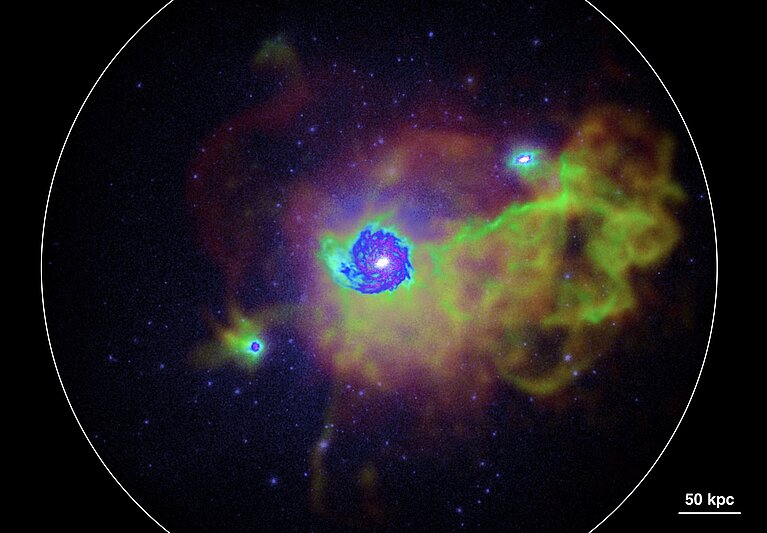January 11, 2021 - Press release University of Zurich
Stars are born in dense clouds of molecular hydrogen gas that permeates interstellar space of most galaxies. While the physics of star formation is complex, recent years have seen substantial progress towards understanding how stars form in a galactic environment. What ultimately determines the level of star formation in galaxies, however, remains an open question.
In principle, two main factors influence the star formation activity: The amount of molecular gas that is present in galaxies and the timescale over which the gas reservoir is depleted by converting it into stars. While the gas mass of galaxies is regulated by a competition between gas inflows, outflows and consumption, the physics of the gas-to-star conversion is currently not well understood. Given its potentially critical role, many efforts have been undertaken to determine the gas depletion timescale observationally. However, these efforts resulted in conflicting findings partly because of the challenge in measuring gas masses reliably given current detection limits.
Typical star formation is linked to the overall gas reservoir
The present study from the Institute for Computational Science of the University of Zurich uses a new statistical method based on Bayesian modelling and run on the CSCS supercomputer "Piz Daint" to properly account for galaxies with undetected amounts of molecular or atomic hydrogen to minimize observational bias. This new analysis reveals that, in typical star-forming galaxies, molecular and atomic hydrogen are converted into stars over approximately constant timescales of 1 and 10 billion years, respectively. However, extremely active galaxies (“starbursts”) are found to have much shorter gas depletion timescales.
“These findings suggest that star formation is indeed directly linked to the overall gas reservoir and thus set by the rate at which gas enters or leaves a galaxy,” says Robert Feldmann, professor at the Center for Theoretical Astrophysics and Cosmology. In contrast, the dramatically higher star-formation activity of starbursts likely has a different physical origin, such as galaxy interactions or instabilities in galactic disks.
Far galaxies across cosmic history
This analysis is based on observational data of nearby galaxies. Observations with the Atacama Large Millimetre/Submillimetre Array, the Square Kilometre Array and other observatories promise to probe the gas content of large numbers of galaxies across cosmic history. It will be paramount to continue the development of statistical and data-science methods to accurately extract the physical content from these new observations and to fully uncover the mysteries of star formation in galaxies.
The original press release was published on the UZH news website on 22 December 2020.
Image above: Stars (white) form throughout the gas disk. (Illustration: Robert Feldmann)
Literature:
Robert Feldmann: The link between star formation and gas in nearbygalaxies. Communications Physics, 7 December 2020. Doi: 10.1038/s42005-020-00493-0

